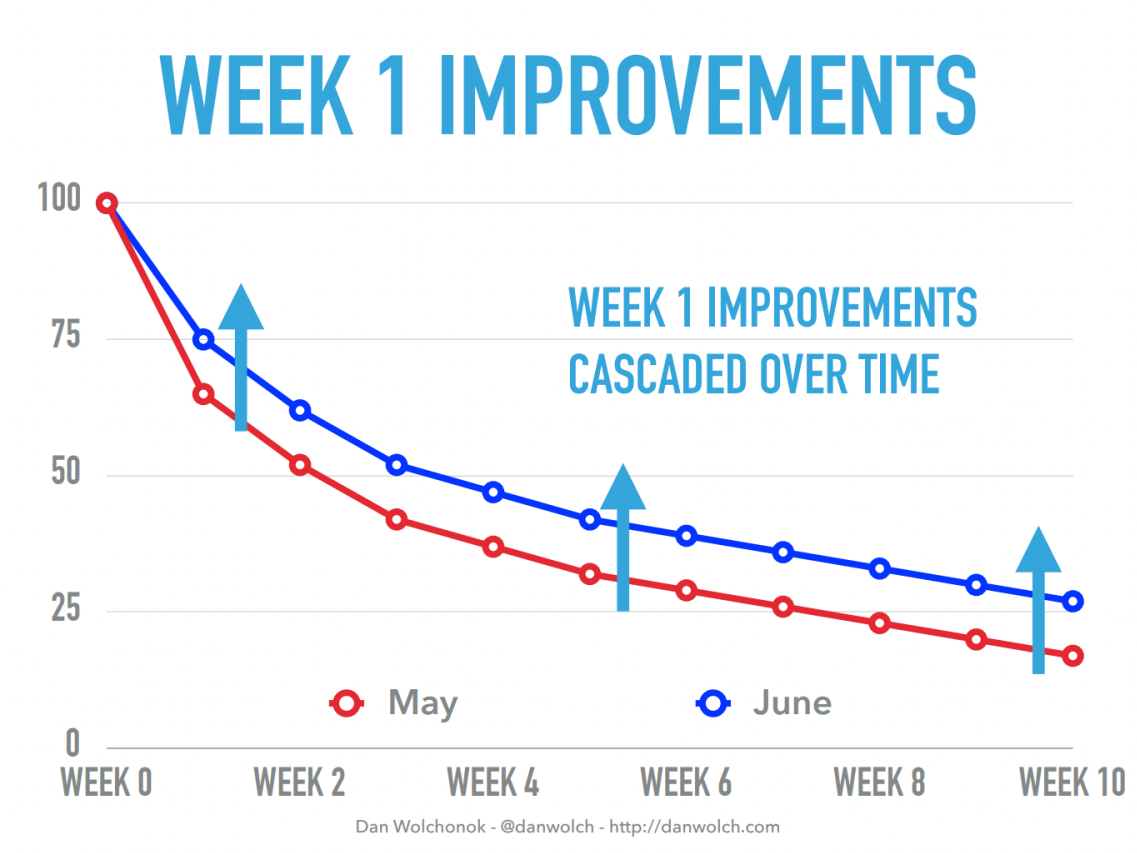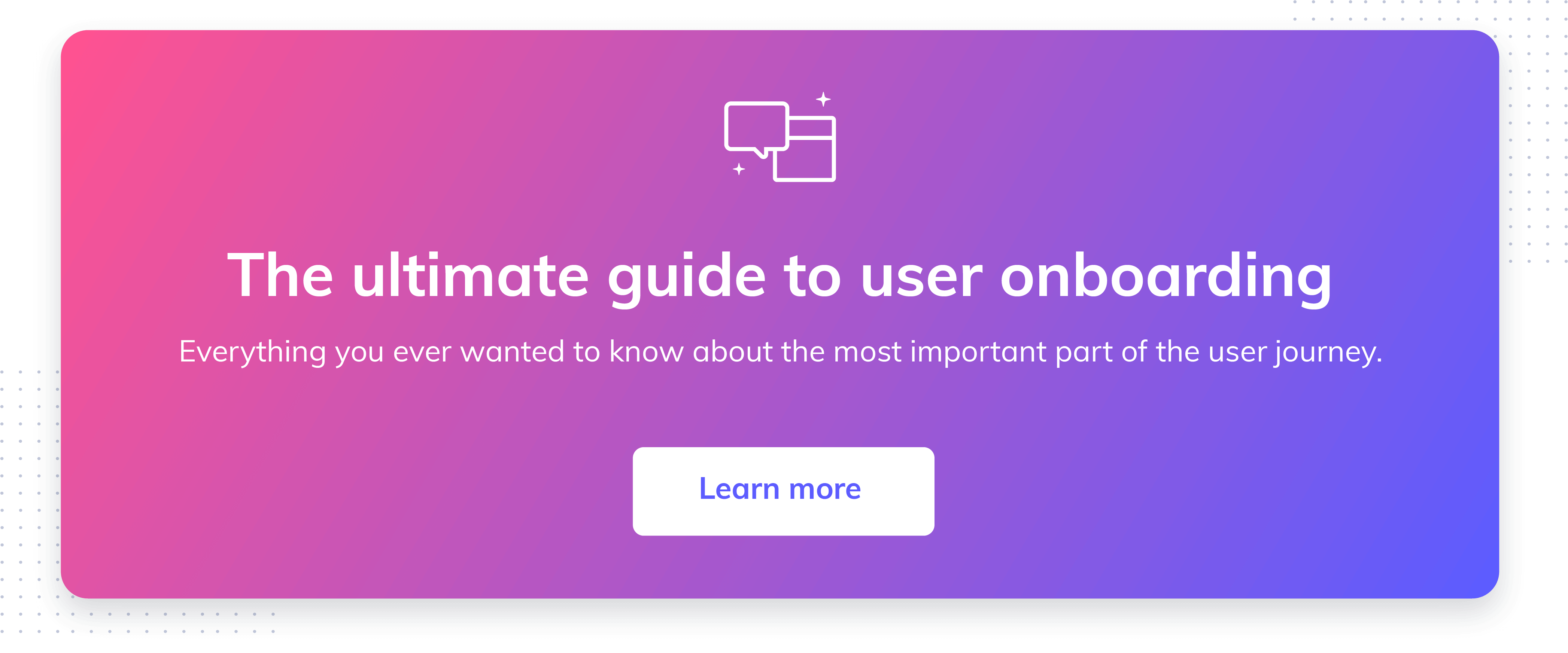How to shorten time to value with better user onboarding

.png)

.png)
Editor's note: This article was orginally published in 2019 and has been updated with fresh content and insights.
Ever tried to assemble a flat-pack bed?
It's not too difficult, as long as you have all the right parts and can follow the instructions. But what if you didn't have the instructions? And what if the manufacturer threw in a few extra parts you don't actually need? And what if that was standard practice and the company always sold beds with random pieces and no instructions?
You'd probably give up and spend the night on the couch, maybe staying up late to research alternative companies, and leave a scathing review of your experience online.
In this scenario, you bought a bed—but you certainly aren't getting a comfy night's sleep.
SaaS products are a bit like flat-pack furniture that needs to be assembled before the buyer can experience value. SaaS customers must also wait to experience the value of their new purchase. It's this delay—known as time to value or TTV—that makes churn such a common problem among SaaS companies.
Whether you're selling software as a service or flat-pack furniture, every customer buys your product to receive a specific benefit. For example, bed shoppers aren't really buying laminate finish or a memory-foam mattress—they're buying a good night's sleep. And people who subscribe to an analytics tool like Amplitude aren't buying pretty graphs or reports—they're buying a way to understand how customers use their product.
For some products, the benefit comes immediately—like the umbrella you buy when it's raining. Sometimes the benefit comes after a bit of effort, like a happier version of our flat-pack furniture story. Time to value depends on the kind of product or service you're offering, but it generally falls into one of 2 groups:
Say it's raining and you duck into a nearby store to buy an umbrella. The time to value is immediate—you see the value of no longer getting soaked straight away. Your aha moment is realized the moment you stay dry. Another example of immediate TTV is HubSpot's Website Grader. Simply plug in the URL of your website to receive a score for your site across categories like social media, SEO, and lead generation. The tool provides immediate value for users and serves as a powerful lead generation tool for HubSpot.
Most SaaS products fall into this category. Access to the product alone doesn't provide the desired benefit—some further action is required. Your customers might need to invite colleagues to collaborate, or import their customer data, or finish your onboarding sequence before they start to realize how the product can benefit them. Take a product like Expensify, for example. Signing up for expense management software doesn't provide value. The aha moment comes when a user files their first hassle-free expense report, a task which requires several steps to complete.
The longer your time to value, the more customer turnover you'll see. People have limited patience and if they don't reach that aha moment quickly, they're likely to feel that their time is being wasted. If they've already paid for your product, that's time and money spent on little visible return.
But a switch flips once customers realize the value of your service. Reaching that aha moment or activation event is often what separates users who stick with your product from those who end up churning. The faster users realize how your product can help them improve their lives, the less likely they are to churn.
And those benefits end up compounding over time. Dan Wolchonok, Head of Product and Analytics at Reforge, explained in his talk at Price Intelligently's 2015 SaaSFest conference that a 15% improvement in user retention in the first week compounded into nearly twice the number of retained users after 10 weeks.

It's crucial that you to help customers reach that point as quickly and efficiently as possible. Behavioral emails, in-app user onboarding, customer success managers, usability testing, and personalization can all help generate excitement and momentum while gently guiding users towards their aha moment.
Now, let's look at some strategies for reducing your product's TTV through different channels.
Onboarding guides can be delivered in a number of ways—within your app using tools like Appcues, via support documentation, or through a series of behavioral emails.
Project management tool Asana does a fantastic job of using onboarding emails to engage new users. During the free trial period, users are sent a series of emails triggered by certain behaviors. Each email includes a lesson specific to a task within the app, and the CTA takes users straight to that feature, allowing them to execute on that task immediately. Asana also sends weekly status report emails, summarizing your completed tasks, how many are left, and the status of your projects.
.gif)
Asana's onboarding emails are a great example of how omnichannel experiences can add value and encourage user engagement.
📖 Read more: 3 must-have user onboarding emails | The ultimate guide to aligning your lifecycle emails and in-app messaging
Use in-app onboarding patterns like checklists and walkthroughs to help users realize the benefits of your product more efficiently. Gently guide users in the right direction until they reach their aha moment. Autopilot does a terrific job at leading users through their visual marketing automation platform without overwhelming them with too many features.

Autopilot's in-app onboarding ensures users quickly realize the core value of the product—in Autopilot's case, creating and publishing their first Journey—in less than 30 seconds.
It's important to focus on the benefits your customer expects to receive not the benefits you want to highlight. Your users don't care about all the bells and whistles in your product as much as you do—they care about how your product is going to make their life better. Don't use your onboarding sequence to drag users through every step and feature in your product at the expense of achieving value.
(Psst—You can create similar onboarding flows with Appcues. You'll need a developer (or someone very tech savvy) to install, but after that, there's no coding required to build native-looking tooltips, modals, checklists, hotspots, slideouts, and more. Check it out!)
📖 Read more: The 5 best walkthrough examples for web apps
For products that are more time-intensive or require extensive integrations with other tools, a more hands-on, high-touch approach can help customers reach value more quickly. A customer success team can help bring a “concierge” approach to reducing time to value by quickly answering questions and offering personalized training.
Customer.io discovered the benefits of concierge onboarding after A/B testing their onboarding process. They emailed 400 new users two days after signup, offering half of them a live call to help them get started with the product. The results of the test showed that users who received the offer of concierge onboarding were twice as likely to become paying customers compared to those who didn't.

Each customer success manager can only support a limited number of customers, so a hands-on approach is best for higher-cost products with longer implementation cycles. SaaS companies with a high volume of lower monthly subscriptions can benefit more from using in-app onboarding tools for low-touch user onboarding. If you offer multiple versions of your product, you can take a hybrid approach and reserve your CSMs for higher tier plans.
📖 Read more: 10 user and customer engagement strategies for leveling up in 2020
When you spend hours in your own product every day, it's easy to forget what a first time user experience feels like to people unfamiliar with your product. What seems like a minor blip to you could be a major point of friction for new users.
Removing friction from the onboarding process is essential for reducing time to value. If users can't find the feature they're looking for in a complicated menu, or your app is difficult to use on mobile, or that one screw seems to be missing from the flat-pack bed (there's always one), your user are likely to give up before they have a chance to receive the value your product provides.
To understand how users experience your product, take advantage of in-depth tools like Mixpanel, Heap, Fullstory, UserTesting, etc. for on-demand and ongoing identification of possible friction in the user journey. And don't underestimate the power of in-person user testing.
All the way back in 2016, for instance, we saw a crazy lift in our activation rate after watching a few user onboarding sessions in FullStory. We realized that many new users weren't reaching the page where they needed to be to realize their aha moment. So we redesigned our welcome message to redirect users to that page after closing the welcome message instead of simply dropping them on the Appcues dashboard. That simple redirection took our completion rate from 13% all the way up to 32%—this meant 150% more users were reaching their aha moment to become activated users.


It just goes to show that even small improvements to your user experience can go a long way towards removing friction and reducing time to value.
📖 Read more: 13 product and behavioral analytics tools to help you understand your users
As we noted earlier, helping users reach their aha moment within the first week can dramatically increase ongoing revenue. Personalizing your onboarding experience can help keep users even more interested and engaged, reducing time to value and improving the overall user experience.
For some products—particularly those that provide value through content curation—the value a user gets depends heavily on their personal preferences rather than on the features offered by a product. Personalizing the onboarding process is especially important in this case. Pinterest leveraged personalization to reduce time to value using location data to suggest trending topics and highlighting popular content in a user's language. The result? Their new user activation and retention rates increased by 5-10%.

By personalizing their onboarding experience, Pinterest was able to help users quickly discover relevant, valuable content, keeping them more engaged and active with the service.
📖 Read more: 5 ways to personalize your user onboarding experience
Whether you're selling flat-pack furniture or software subscriptions, reducing your users' time to value is always a good idea. Helping users reach their aha moment more quickly keeps them active and engaged, reduces the chances they'll churn early, and simply provides a better UX.
Take another look at your user journey to identify points of confusion that can be clarified, moments of friction that can be smoothed out, and complex processes that can be simplified. You'd be amazed what even a few seconds saved on the journey to value can mean for your activation and retention rates.
